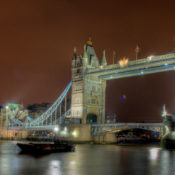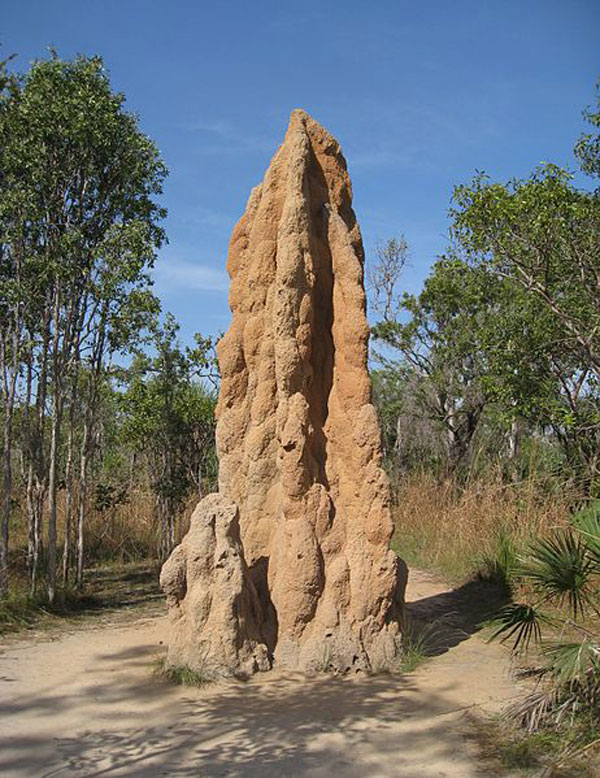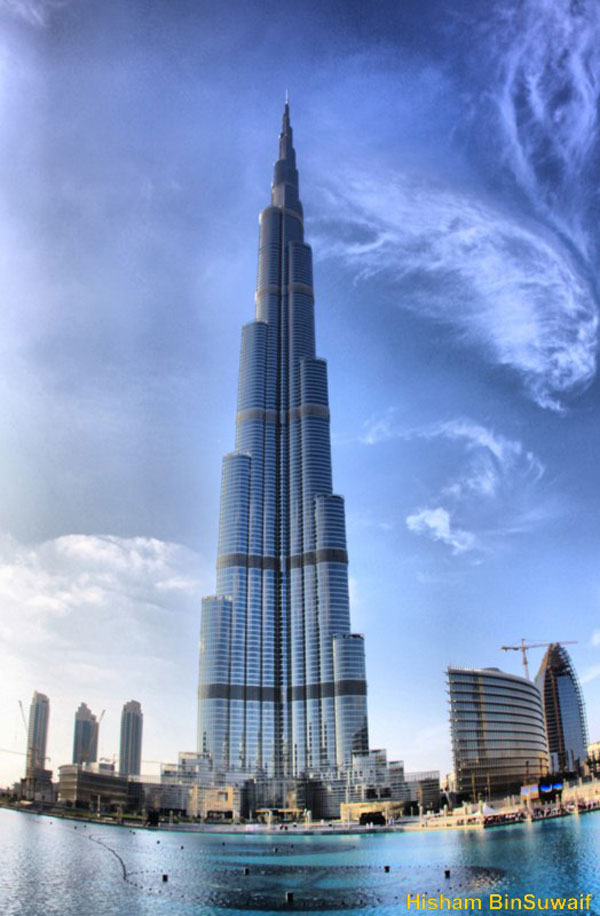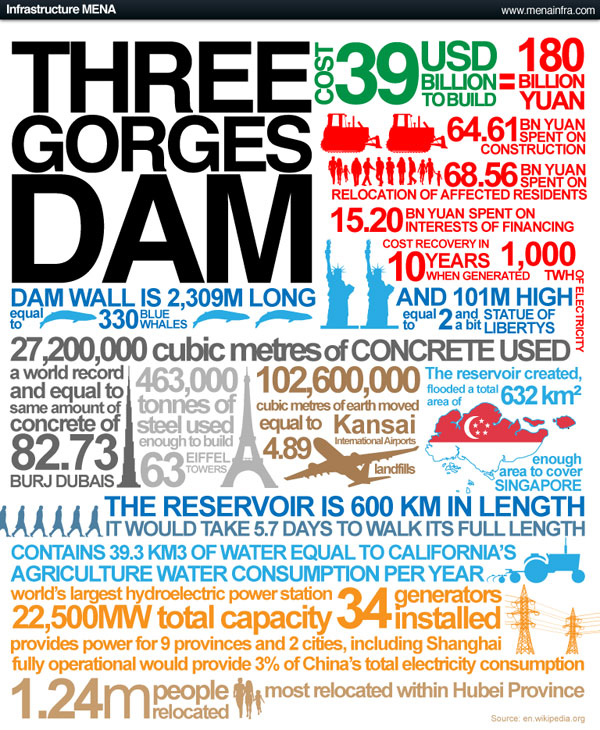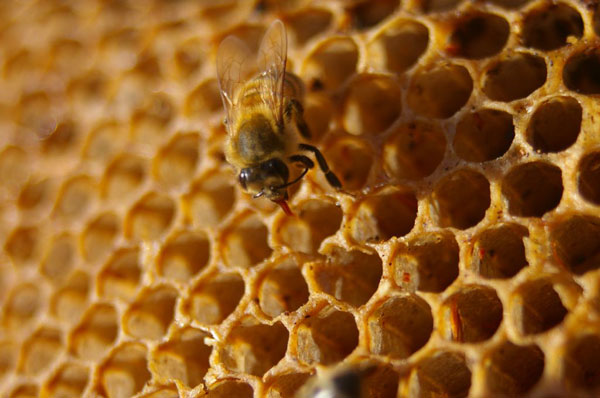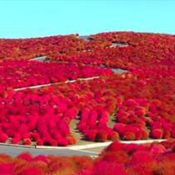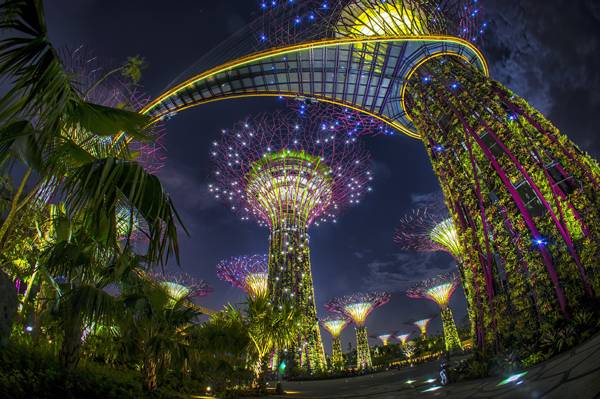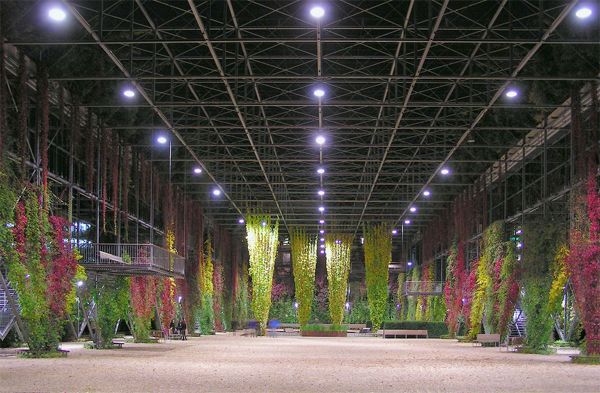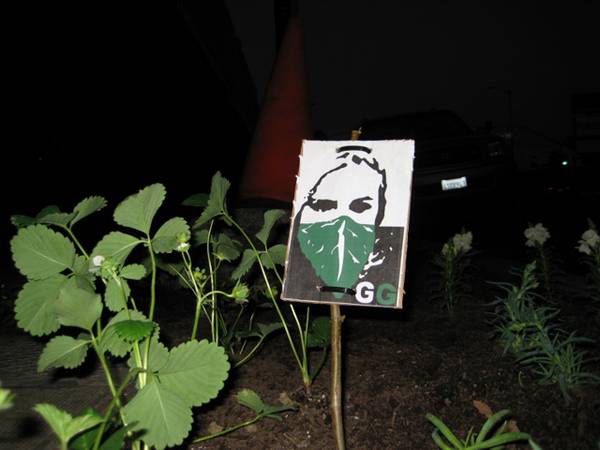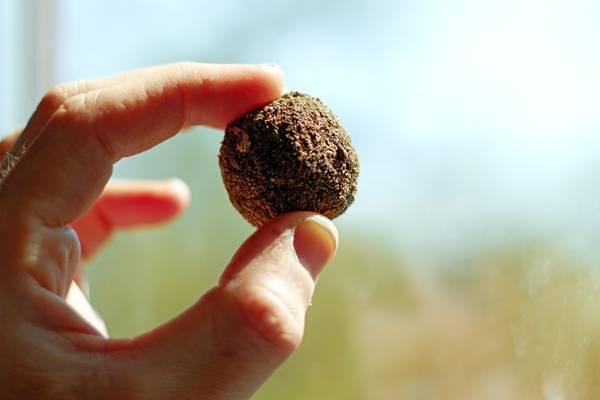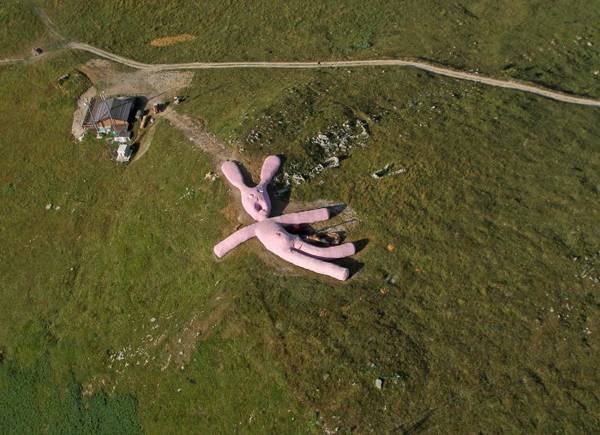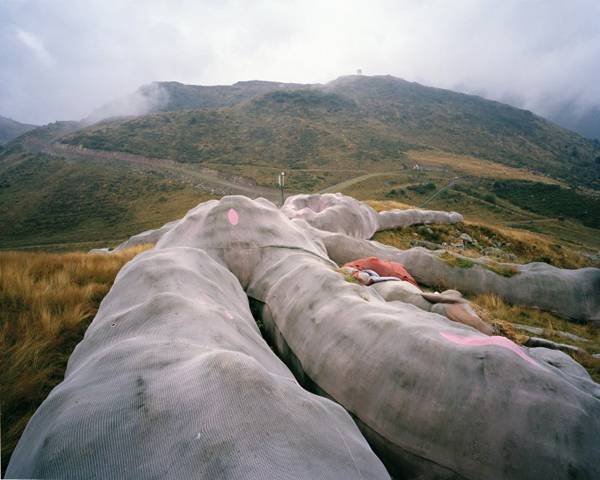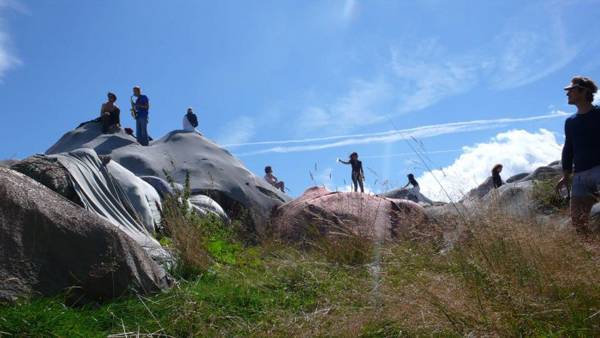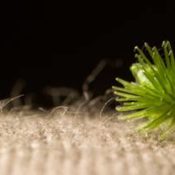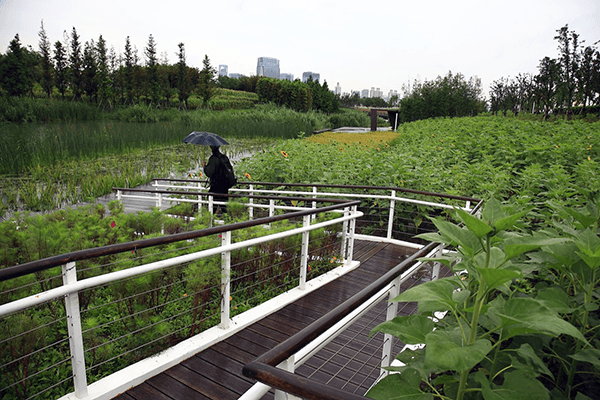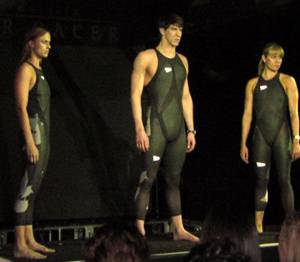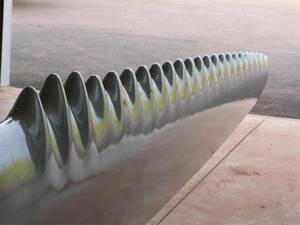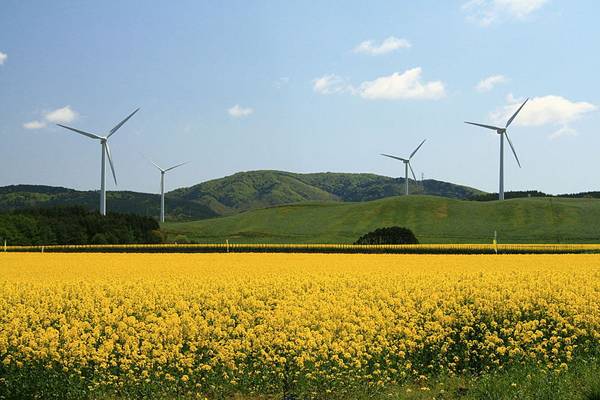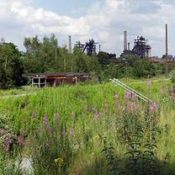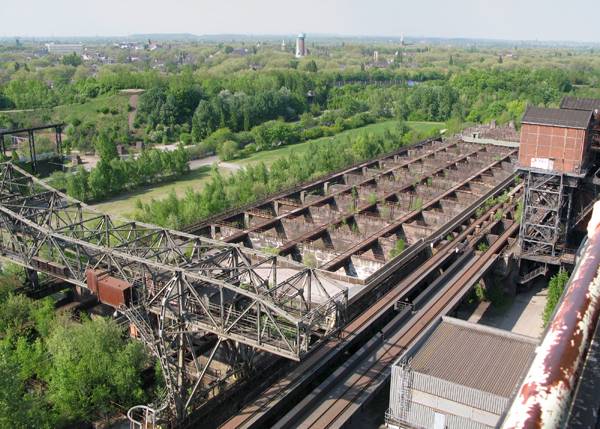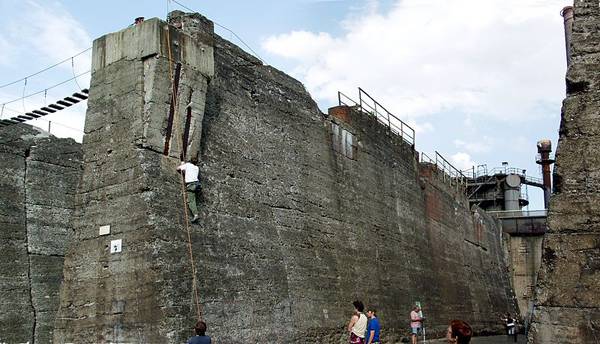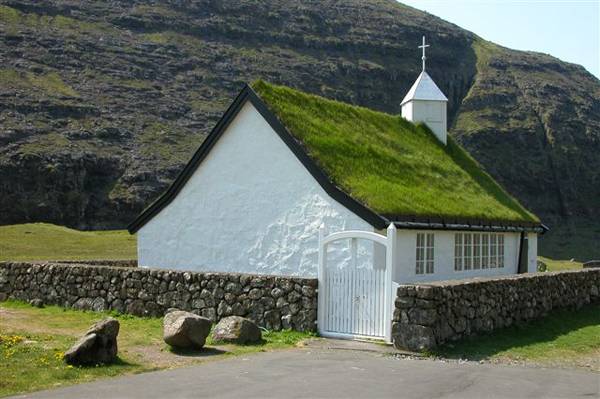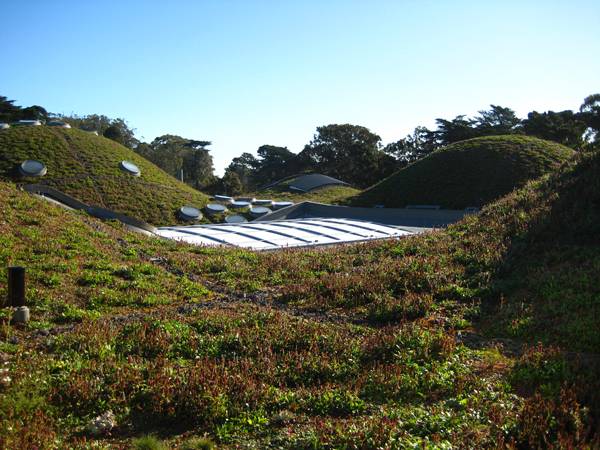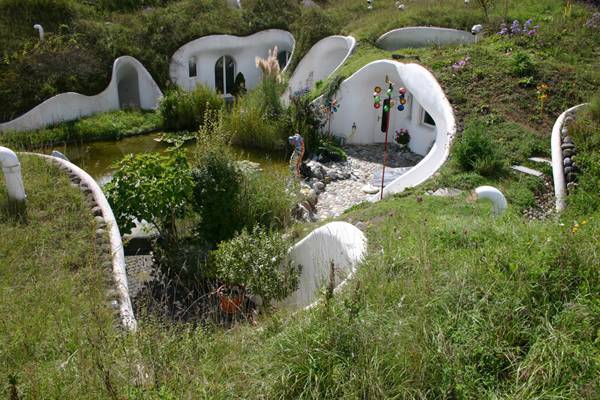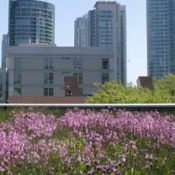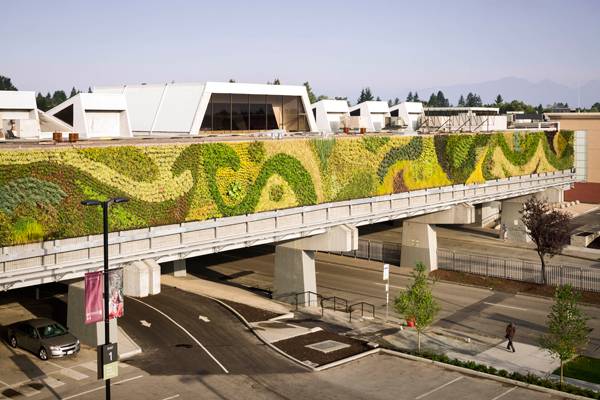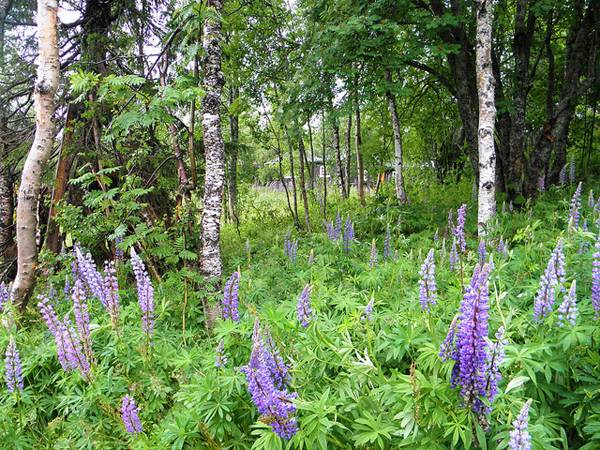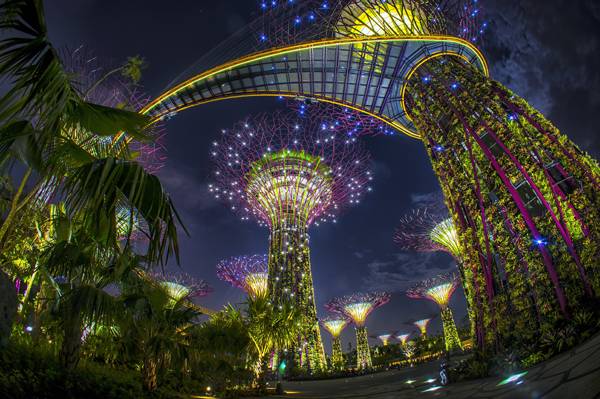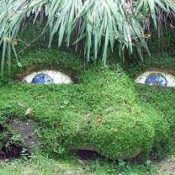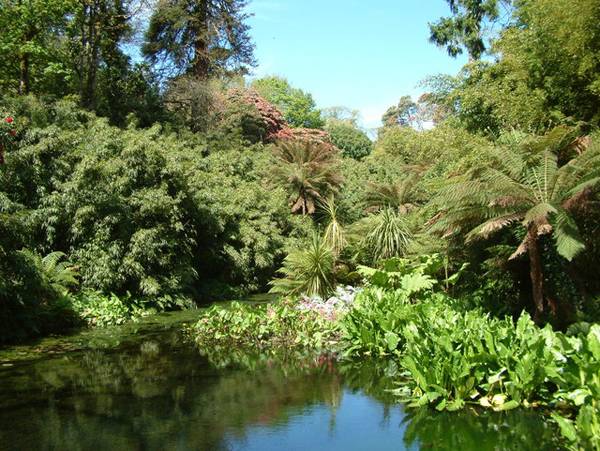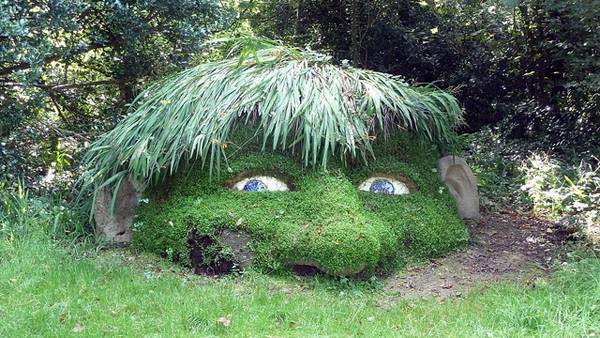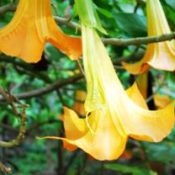Author: LAN
Why Humans Do Not Make The Best Architects
What can we learn from nature’s natural architects to inspire our built environment. We humans like to think of ourselves as the best architects and engineers on the planet, but for millions of years animals have been constructing their own low carbon cost-effective homes from what they find around them in their natural environment. In this article we look at what we can learn from the world’s natural builders through three of the best examples of animal architects.
Arguably the best builders in the (natural) world are termites. The mounds termites build are HUGE for their size. The collective homes of these social animals can reach 7.5 m (25 feet) in height, and up to 12 m (40 feet) in diameter. Given that the average termite is 1 cm (0.4 inches) long, that’s pretty incredible. Scaled up to human size we would have to build a skyscraper 1.4 Km (4,600 feet) tall to compete with those kind of statistics! To put that into perspective, currently the world’s tallest building is the Burj Khalifa in Dubai standing at 830 m (2,722 feet) tall. What’s particularly interesting about the form of Burj Khalifa is that it is remarkably similar to that of a termite mound. The tapering form of the tower has a lower center of gravity, thus increasing stability, and allowing for a taller building.The Smallest Animals are the Best Architects, with the Biggest Structures
But their size is not the only thing which makes termite mounds so amazing. As well as being homes, termite mounds are also farms. These clever little critters cultivate a fungus (such as Termitomyces species) to break down their food into more easily digestible compounds. This, however requires the interior of the termite mound is kept at a constant 30 °C (87 °F), when the outside temperatures can range from a couple of degrees above freezing, to in excess of 40 °C (105 °F). The termites achieve this by creating a series of ventilation tunnels which extend from the base of the mound to a central shaft which then exits at the top. This creates convection currents which regulate the internal temperature of the mound. WATCH: Termite Mounds – Wallace & Gromit’s World of Invention Episode 1 Preview – BBC One This very concept inspired architect Mick Pearce to design the Eastgate Center in Harare, Zimbabwe. This 55,000 square meter mixed used development employs the passive environmental heating/cooling system used in termite mounds to enable the entire building to be run without conventional heating or air conditioning. All this means the building is able to run on a budget that is approximately only 10% of a similar conventional building.
The Best Engineers Make the Best Architects
Some animal architects create such large interventions that they physically alter their environment. These are known as engineer species. Beavers are known to create such extensive dams that they change the ecology of their surroundings. These types of organism are generally known as allogenic engineers.
There is a common miss-held belief that The Great Wall of China can be clearly seen from space. NASA has confirmed that this is generally not the case. However, there is a beaver dam on the edge of Wood Buffalo National Park in Northern Alberta, Canada, which CAN be seen from space. The dam, which has only recently been discovered, measures 850 m (2790 feet), and is thought to be the work of several beaver families working in cooperation. WATCH: Dam Those Beavers By contrast the largest man-made dam is the Three Gorges Dam in China, finally completed and fully operational since July 2012. The hydro-electric dam measures 2,335 m (7,660 feet), and can also be seen from space. But dams are not the only things we humans have borrowed from beavers. Defensive moats, methods of irrigation, and snow insulating roofs are all examples of humans imitating the building practices of beavers. Related Articles:- Biomimicry: What is it, and What Does it Mean For Landscape Architects?
- Understanding the Basic Principles of Organic Design
- Biomimicry UK: Interview With Richard James MacCowan
- Biomimicry: Inventions Inspired by Nature by Dora Lee
- The Shark’s Paintbrush: Biomimicry and How Nature is Inspiring Innovation by Jay Harman
Article by Ashley Penn Return to Homepage
This article was originally submitted to Landscape Architects Network
9 Awesome Ways to Use Plants
A deeper look at some truly awesome ways to use plants. Looking at examples from around the world. What are the most awesome, unique, awe inspiring, cool planting schemes and use of plants in the landscape and beyond? Green roofs, living walls, green facades, phytoremediation, moss art, green graffiti, and mass plantings; there is too much to choose from . Whether it’s ecological, functional, sensory or just simply visually stunning, here’s 9 of my favourites. What’s yours?
Awesome Ways to Use Plants
9. Muscari River, Keukenhof Gardens, Holland Consisting of Muscari armeniacum, also known as Grape Hyacinths, the Muscari or “Blue River” winds through 32 hectares of the gardens and woodland, at Keukenhof Gardens in Holland. Without a doubt one of the most spectacular sights and most photographed scenes at Keukenhof. Along with the overpowering visual impact of the planting scheme, the scent from the Muscari helps establish a truly unique character for itself as an element of the landscape. WATCH: Keukenhof Gardens (Forward to 3:20 to see the Muscari River) 8. The Pothole Gardener Not content with waiting for potholes to be fixed with boring, depressing tarmac, a guerrilla gardener from East London who fills potholes with compost, colourful perennials/bedding plants and then adds toys, doll furniture, etc to create mini landscapes, often with a comedic edge. WATCH: Holes Of Happiness 7. Gardens by the Bay, Singapore, Grant Associates The most iconic aspect of the Gardens by the Bay is the Supertree structures. Steel structures, ranging in height from 25 to 50m. These super structures harvest rainwater, generate energy through photo voltaics and function as ventilation channels for the parks’ biomes. The structures are clad with a living wall; consisting of Bromeliads, Orchids and Ferns. The living walls vegtation passively cools the air entering the ventilation channels into the biomes.
6. ‘Bloom’ by Anna Schuleit “Bloom” was a temporary living art installation and later on, a social artwork, located within the walls of the now demolished Massachusetts Mental Health Centre. The installation celebrated over 90 years of the centre’s service and accomplishments, with the use of 28,000 flowers representing “how flowers are a symbol of healing when they are given to the sick, yet patients of psychiatric institutions rarely receive flowers. She decided to counteract this absence of colour and life”. Truly, haunting and thought provoking. WATCH: Bloom by Anna Schuleit Haber 5. Public Farm 1 by Architecture WORKS Public Farm 1 was constructed in 2008 as an educational and social space that functioned as an urban farm. Edible vegetables, fruits, salads were located in raised planter columns which grave rise to an eye catching structure. Along with the more obvious benefits, this planting scheme proved that urban farms could be designed to be aesthetically stunning, while still performing the desired function. WATCH: Public Farm 1 4. MFO Park, Zurich, Switzerland The steel structural facade houses an interior courtyard garden and elevated walkway while creating a historical link to Zurich’s industrial heritage. The facade is colonised by numerous species of climbers, vines and shrubs. Read our full review of MFO park. The plant species is split between a mixture of deciduous, semi-evergreen and evergreen; this allows for precious sunlight to penetrate into the interior courtyard garden providing warmth during winter, while providing shade in the summer as the vegetation re-colonizes the structure. The spreading vegetation symbolizes Zurich’s progression from an industrial city to that of a sustainable and green one. 3. ‘A Wheatfield with Cypresses’ Green Wall, London’s Trafalgar Square, National Gallery Based on Van Gogh’s painting of the same name, this living wall is a carbon copy, with plant choices, based on the boldness of colour, arranged in blocks to represent the painter’s masterpiece. The scene is brought to life with the added dynamics of texture and movement of the grasses in the wind. Read more about green walls in our article Going Vertical: The History of Green Walls WATCH: ‘A Wheatfield with Cypresses’ Green Wall (Forward to 1:50) 2. Hitachi Seaside Park Forget that it’s a monoculture and all the negative associations with such a planting approach. It’s awesome. The images in the video say it all. WATCH: Hitachi Seaside Park 1. Wisteria at Ashikaga Park, in Japan. Magical. Graceful. Ethereal. Awesome. Need I say more?
Ashikaga Park. Credit: Yoshinori Fukumoto
- Planting: A New Perspective
by Noel Kingsbury
- Botany for Designers: A Practical Guide for Landscape Architects and Other Professionals
by Kimberly Duff Turner
Article by Joseph Clancy Return to Homepage
This article was originally submitted to Landscape Architects Network
Guerrilla Gardening – Breaking ALL The Rules!
Looking to interject color into a blighted landscape? It may be easier than you think. Combine clay, compost, native seeds and water, and you have the fixings for a classic clay seed ball. The seed ball, a preferred weapon of the guerrilla gardener, is an inexpensive way to cover expansive areas in a short period of time. The first recorded use of the term “guerrilla gardening” was in New York’s Bowery-Houston area by Liz Christy in 1973. Christy and her group transformed a neglected private lot into a garden. Today, this space still exists, maintained by volunteers and overseen by the parks department. Since the 1970’s, Guerrilla Gardening has exploded in popularity and use as a method of improving our abandoned spaces.
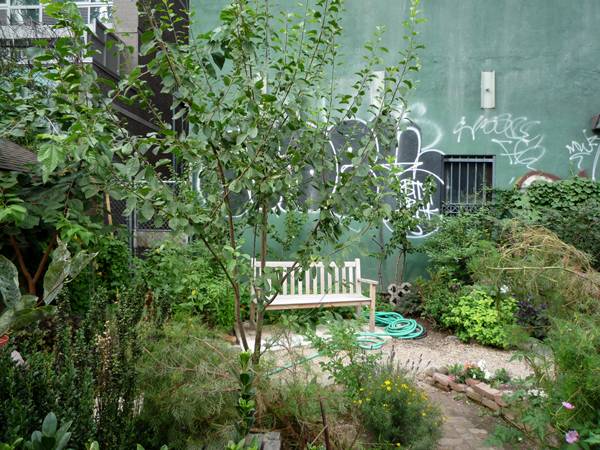
The Liz Christy garden has been growing since 1973, and is so healthy it can barely be contained by its iron fence. Credit: Jessica “The Hun” Reeder; CC 2.0
- Use only land that is unused or undesired
- Leave the land in better condition than prior to finding it
- Plan ahead
After all, what is subversive about planting flowers? Recommended Reading: Guerrilla Gardening: A Manualfesto by David Tracey Article written by Brett Lezon Return to Homepage View LAN’s most popular articles HERE! Featured image: Guerilla Garden in front of Flying Pigeon LA. By Umberto Brayj CC 2.0
This article was originally submitted to Landscape Architects Network
Giant Rabbit Art Has Tourists Flocking to See it!
Some pieces of art are meant to be admired from above, from a bird’s-eye view. They are always large, usually very impressive, and have been known to humanity for quite a while – long before the Google Earth era. Some of the notable examples that must be mentioned include the Uffington White Horse, Cerne Abbas giant, the Long Man of Wilmington, Osmington White Horse, the Nazca lines in Peru and some of the modern ones – the works of Jim Denevan or Jaroslaw Koziara. The role of these prehistoric pieces is often uncertain and a matter of much speculation; the modern installations are a part of the land art movement, which brings together art and landscape.
There are many artists worth mentioning and numerous land art installations deserving of an article. However, one piece is particularly surreal – a giant toy rabbit lying on side of Coletto Fara Mountain, right above a village of Artesina in Italy. The Interactive Art This queer addition to the mountainous landscape feels like its taken straight from Alice in Wonderland. Responsible for it is a group of artists by the name of Gelitin. The four Austrians: Ali Janka, Wolfgang Gantner, Tobias Urban and Florian Reither met in 1978 at a summer camp. Since then, as their website states, “they have been playing and working together”. Their work surely looks like they are having a lot of fun! They are known for a provocative sculpture titled “Arc de Triomphe”, representing a man bent over backwards and urinating into his own mouth. This piece caused a scandal in Salzburg and was taken down before the visit of Prince Charles. Their works demand the viewer’s attention and action, they are not meant to be appreciated in a quiet, serious environment of an art gallery. They are very much alive and living their own, independent lives – that is what the pink rabbit is all about. Visible From Space The sculpture is mostly composed of straw and wool. It is 60 metres long, 6 metres high and is visible from space. The legend (spread by the group itself) has it, that dozens of grannies made its “skin” out of a ton of pink wool. The artists took the pieces and sewed them together on the site, in their carefully chosen location. The Hase (German word for hare) is lying on a hill slope like on a bed, looking like a once loved, but now abandoned, giant’s kid toy. It is lacking one eye, its mouth is open as in a mute scream and its intestines and red heart are ripped out from its round, pink belly. Tourism Magnet Nonetheless, it is adored by the locals and the tourists. The artists claim that “as soon as there’s a ladder, someone from the village comes up with sewing kit in hand and repairs him”. Only the people from the other, neighboring villages do not appreciate this new inhabitant of the mountainside – but they are probably just jealous of all the attention it is getting! Hundreds of tourists make the exhausting journey up the mountain path to see it, take pictures or simply lie on its warm, soft belly, becoming a part of it for a while. The skiers in winter use it as a jump, the tourists in the summer – as a giant sun bed. It’s Unique Relationship with the People The artists themselves describe it as a “decaying corpse” and “Gulliver”, while its human visitors are “maggots” and “Lilliputs“. They are supposed to feel tiny in comparison to the rabbit, climb on it like on a mountain, discovering its summits and valleys. The sculpture is a landscape in its own right! Becoming an Eternal Part of the Landscape The rabbit is slowly growing into the landscape. When the autumn mists are lifting, it looks like it is still breathing. Moss and grass are sprouting from its belly and the animals are burrowing in its body. The weather and the visitors are taking their toll. It is gradually decomposing. It is meant to stay on the site from 2005 until 2025, by which time it is predicted to completely disappear. The interaction of the rabbit with the human factor and the surrounding landscape is the integral part of Gelitin’s art. They want to see it become the part of the mountainside, but also the visitors to climb on it, use it and abuse it, marvel at it and above all – simply enjoy it and love it. And the artists promise it loves them back! The rabbit is supposed to bring happiness, just like the rest of Gelitin’s work, which might be a bit tasteless, slightly psychedelic, quite silly, might even be bordering kitsch, but which always means pure, un-spoilt fun. Article by Marta RatajszczakView LAN’s most popular articles HERE!
This article was originally submitted to Landscape Architects Network
Biomimicry: What is it and What Does it Mean For Landscape Architects?
Biomimicry or biomimetics refers to the direct study of nature, its organisms, ecosystems, and processes to inspire solutions to anthropogenic problems. It is based on the Darwinian principle of evolution through natural selection -the basic premise that species survive because they are well adapted to their environment. Traditionally, when researching for a product, designers will look at what products have gone before. Building on the successes of the previous models, designers then add new innovations to hopefully make a better product. This is commonly known as research and development or ‘R&D’ for short. In biomimetics designers look to how nature has solved problems. This is then studied and copied. This method of copying nature takes full advantage of the 3.5 billion years of ‘R&D’ that nature has undergone, through natural selection.
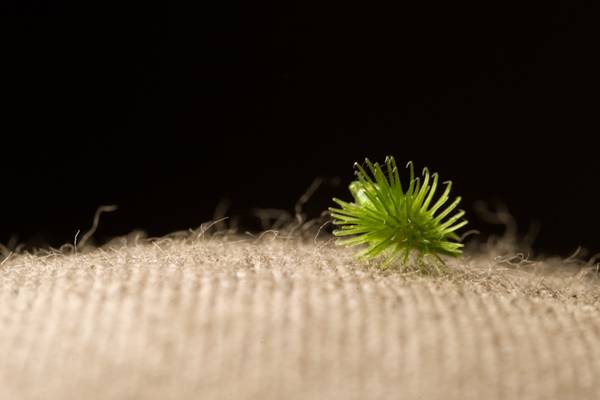
Seed from which Velcro was created. Credit: Kalyan Varma, under GDFL

Famous first flight of the Wright Brothers. Credit: Public Domain via britannica.com

Do You See A Road Network? A River System? A Circulatory System? Or Just A Leaf? Credit: Christoph Rupprecht; Leaf Structure VII, CC 2.0
Whilst still in its early stages, the joint venture hopes to both create new cities which thrive, and retrofit failing cities with biomimetic infrastructure. Many of the ‘tools’ for this will be familiar to fans of Landscape Architecture; greenways, undeveloped flood plains, green walls / roofs, permeable paving, etc. But the key is to use all these tools to create a city which behaves like an ecosystem. Projects are already under way in China and India.
From the microscopic scale of dermal denticles to the macroscopic scale of city planning, biomimicry and biomimetics can offer a wealth of design inspiration to product, architectural, and landscape design. It would seem the possibilities are as endless as life is diverse. Recommended reading: Biomimicry: Inventions Inspired by Nature by Dora Lee The Shark’s Paintbrush: Biomimicry and How Nature is Inspiring Innovation by Jay Harman Article written by Ashley Penn Return to Homepage
This article was originally submitted to Landscape Architects Network
From Rubble to the Ritz – Revitalizing Abandoned Sites
Have you ever walked in a park between old industrial buildings getting a scent of the industrial era, while having a thousand things to explore? The park area, located in the northern part of Duisburg, was abandoned by the steel industry, Thyssen AG, in 1985 and began decaying before 1989. It became a part of the International Building exhibition, “IBA EmscherPark“, and was converted to what it is now. It was a segment of a ten-year transformation process combining more than one hundred projects, revitalizing a former industrial stretch of more than 300 km along the Emscher River. The Duisburg-Nord innovative landscape masterpiece took about ten years to complete and is constantly changing. The first part opened in 1994. Industrial Landscapes The aim of IBA Emscherpark project was to set new guidelines and standards in planning for a quality environmental, social, and economic design. Having in mind the objectives of ecological recovery, modern drainage systems, of the river, preservation of the industrial legacy and the social and cultural aspects, Latz + Partner made a project manifesting the industrial heritage of the area through landscape design.

Some of the most important structures at Landschaftspark Duisburg-Nord. Credit: CC-BY-SA-3.0 by
kaʁstn Disk/Cat
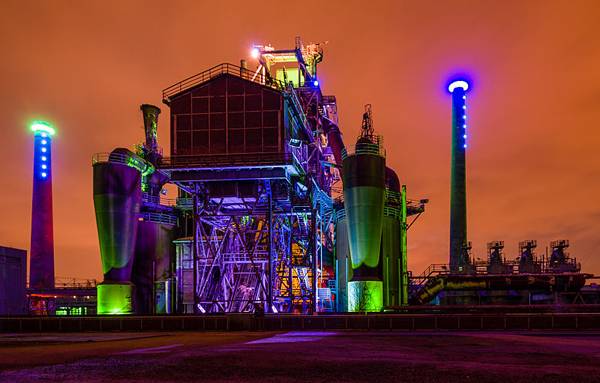
Side view of Furnace No 5 at Landschaftspark Duisburg-Nord (Landscape Park Duisburg North) at night. Credit: Tuxyso / Wikimedia Commons / CC-BY-SA-3.0
Play points – Maybe when you hear the word “play” you relate it to kids, but at Duisburg-Nord there are play points for everyone. You can find diving courses in the former Gasometer, now among the most innovative diving center in Germany. Also, high ropes and climbing walls, which are built on the ore bunker. There is also horse riding, archery courses, BMX riding, and lots of kid’s playgrounds full of surprises!
Ore Bunker Gallery – It is a labyrinth of spaces designed with the help of artists from the Lehmbruck Museum, which is not only a gallery, but a discovery of gardens, sounds, and views stretching through the designed bridges, pathways, and wall openings. Related Articles: Top 10 Reused Industrial Landscapes Community Turn Abandoned Industrial Site into Public Park Industrial Site Transforms into Beautiful Landscape
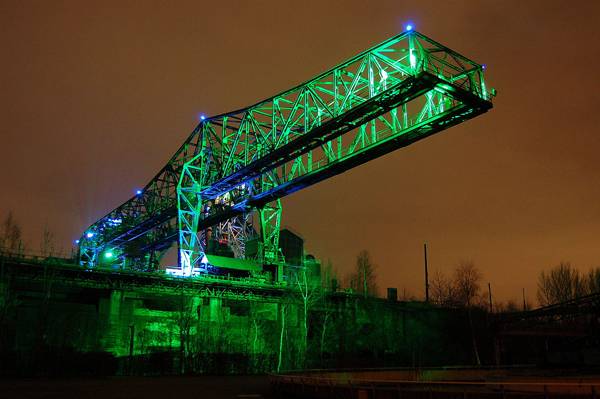
The park is known for its dramatic lighting schemes. Credit: Released for public domain by its author, Tarnst at the German Wikipedia project.
This article was originally submitted to Landscape Architects Network
Dyslexia in Design – Is Dyslexia a Problem or an Advantage to a Designer?
Dyslexia in Design – A deeper look at how Dyslexia has bonded with the world of design. The lexicography of the word dyslexia translates as ‘trouble with words’ from the Greek ‘dys’ meaning ‘bad, abnormal or difficult’ and ‘lexis’ meaning ‘word’. In popular culture the term dyslexia is primarily employed to describe children and young people who have a specific learning disability with regards to written language. Historically, other terms used synonymously with dyslexia have included ‘word blindness’ and ‘strephosymbolia’. Both of these terms focus on the difficulties faced by dyslexics, thus defining them by what they can’t do, rather than what they can.

One of Einstein’s greatest quotes. Image credit: QuotesEverlasting. Modified by SDR, CC 2.0
Dyslexia in Design
The Problem It is estimated that dyslexia affects 4-5% of the UK population. With such low figures, it is, perhaps, surprising that dyslexia remains such an important issue for learning. Difficulties in other areas of the school curriculum are not so well documented. For example, some people find playing the piano difficult. No matter how hard they try they simply never master it. Despite this lack of ability, there is no term to describe people for whom playing the piano is difficult. This is because in modern society the ability to play the piano fluently is simply not as important as the ability to read and write. The ability to read is fundamental to how we are taught at school, college, and university. Dyslexics, therefore, might well feel disadvantaged, or marginalized by mainstream academia. Background

Image source, licensed under creative commons.
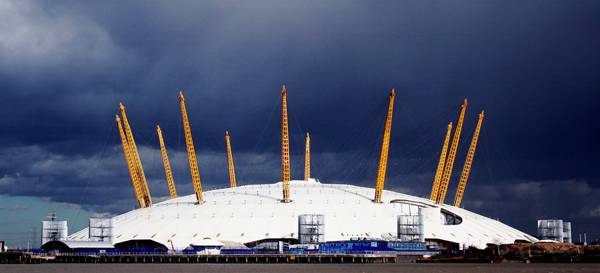
Millennium Dome, London, UK by Richard Rogers. Image Source: Flickr by Zakgollop.
- The Dyslexic Advantage: Unlocking the Hidden Potential of the Dyslexic Brain by Brock L. Eide M.D. M.A.
Article by Ashley Penn Return to Homepage Featured image: Source, licensed under creative commons.
This article was originally submitted to Landscape Architects Network
Why Should You Have a Grass Roof?
In landscape architecture or architecture itself, major concepts often come in small packages. A little detail can make the base of a whole project; it is often these elements that make a building stand out or have a unique character which improves its overall look and function. One of these elements can definitely be represented by grass or green roofs, and though this may seem like another new feature for houses in the flooding wave of the eco trend, grass roofs are actually a very old invention, dating from many centuries back. Grass or sod roofs, as they can also be called, were used by the Vikings in most of Scotland and Ireland, and though this particular architectural design may be a feature of the northern, cold bearing civilizations, its use was quite motivated even from those times and has been developed further to this day.
Natural Insulation There are a lot of reasons why grass roofs are still around today and becoming a popular element in more and more homes. Just think of the people living up north; exactly, it’s cold! Green roofs, whether they are from grass or different plants make a perfect natural insulation element for your home roof, keeping the cold out in winter and maintaining a cool atmosphere in summer, in case your house isn’t in a chilly country. Not to mention that it may be a lot cheaper than other products and it cuts your bills! If your dwelling is saved from the cold, but drenched every day in rain, you may want to consider installing such a grass roof as it is a very efficient rain water absorbent, in addition to regulating its temperature and filtering it in case of quantity overflow; so, in case your area has lots of rain fall, a grass roof may improve your rain stats, especially if you have a flat roof. Sound barrier Even Chicago City Hall has been taking into the trend of green roofs, creating a delightful but very practical environment on their main building. In such a big and crowded city as Chicago, the natural roof can also prove to be a great sound insulator, keeping the employees undisturbed by the sound of traffic and big city life. This can also apply to private homes that are situated in crowded areas.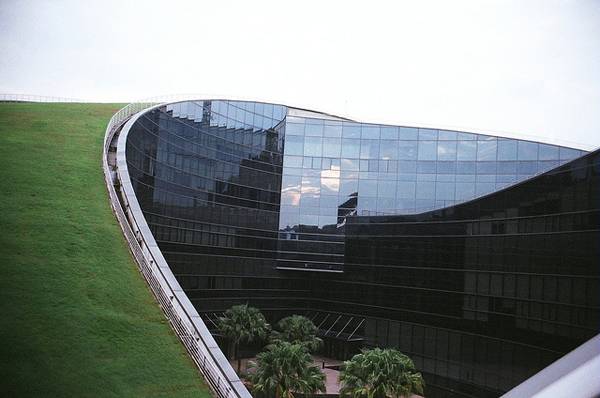
School of Art, Design and Media at Nanyang Technological University, Singapore. Credit: CC BY-SA 2.0, Jin Guan KOH
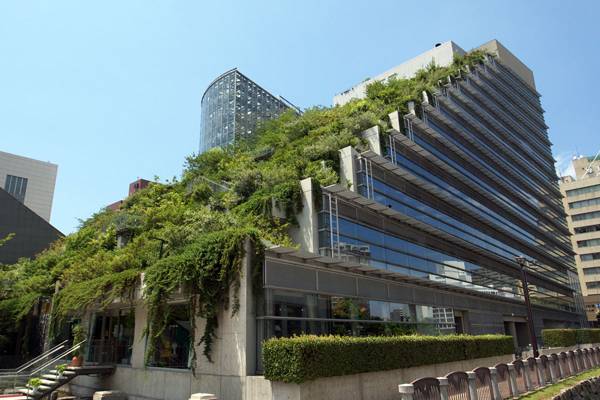
Fukuoka building with Roof garden, in Fukuoka city, Japan. Credit: CC BY-SA 3.0
Pontafon — Photo created by Pontafon
This article was originally submitted to Landscape Architects Network
What Makes a Biophilic City?
Joseph Clancy, emerging expert on biophilia looks at what makes a biophilic city. To what degree must a city engage in biophilia to be classed as a “biophilic city”? Timothy Beatley describes a biophilic city as being “partly defined by the qualities and biodiversity present and designed into urban life, but also the many activities and lifestyle choices and patterns, the many opportunities residents have to learn about and be engaged directly in nature, and the local institutions and commitments expressed, for instance, in local government budgets and policies”. So how do we classify a city as a biophilic city?
According to the works of Timothy Beatley, Biophilic Cities can be indicated by the following qualities:- Biophilic cities have abundant nature in close proximity to large numbers of urbanites
Green infrastructure programs, parklets & a high percentage land cover of green space would be steps towards fulfilling this aspect of a biophilic city. New York City qualifies as a biophilic city in this regard by PlaNYC’s goal of a public green space within a 10 minute walk of every resident by 2030, while Seattle P-Patch program aims for one community garden per 2,500 city inhabitants!
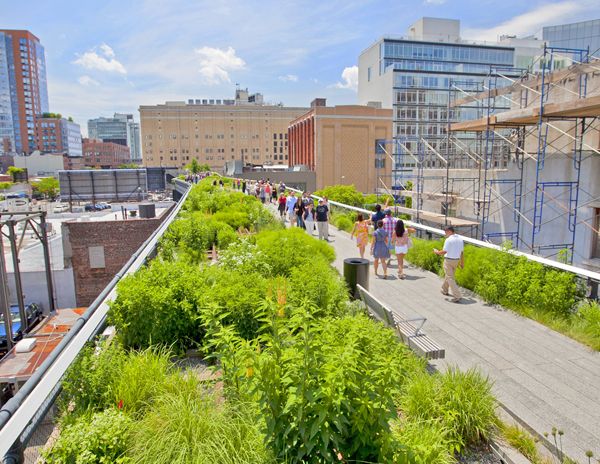
The Highline is a great example of a planting scheme increasing biodiversity in an urban area; credit: shutterstock.com
- In biophilic cities, residents feel a deep affinity with the unique flora, fauna and fungi found there
Incentive, education and encouragement from city authorities are necessary to catalyze this goal. It measures not just the environmental values of inhabitants, but their knowledge of local and native species. In New Zealand, the city of Wellington also has over sixty community conservation groups! In the last two years alone, volunteer environmental groups have performed 28,000 hours of service on Wellington’s 4,000 hectares of nature reserves. While in Oslo, Norway, over 81% of inhabitants had visited the city’s surrounding forests in the last year, proving residents appreciation of the natural landscape.
- Biophilic cities are cities that provide abundant opportunities to be outside and to enjoy nature
Urbanization causes severe fragmentation of habitats and nature, with land value at a premium, resulting in little room for green space. Well connected green spaces and green corridors can counter this problem, easing accessibility for urban inhabitants. Singapore has an extensive park system, integrated by 200-kilometers of Park Connectors, in the form of elevated walkways. Oslo, Norway is perhaps the leader in this category however, with an estimated 94% of the city’s residents living within 300 meters of a park! Anchorage, Alaska has 1 mile (1.6Km) of natural walking trails per 1,000 residents. The trails are multi use and seasonal, offering everything from hiking to skiing.
- Biophilic cities are rich multisensory environments, where the sounds of nature are as appreciated as much as the visual or ocular experience
The integration of natural spaces and ecological corridors into the urban fabric can create the conditions necessary for multisensory, nature rich environments. Implementing a Noise Reduction Plan or reducing levels of vehicular transport, would create “quiet zones”, with noise levels below 50 decibels (dB). Oslo, Norway is attempting an initiative of daylighting all eight of the city’s rivers. This will form part of the Akersleva, a combined green and blue infrastructure corridor, connecting the city centre inhabitants with nature in the very heart of the city, with 14 quiet zones planned within the corridor.

Akerselva goes into tunnel at Vaterlandsparken, Vaterland / Grønland, Oslo. Credit: Helge Høifødt, CC 3.0
- Biophilic cities invest in the social and physical infrastructure that helps to bring urbanites in closer connection and understanding of nature
Investment in biophilic projects is an excellent indicator of a biophilic city. Timothy Beatley identifies 5% of a cities budget dedicated to biodiversity and at least 1 current biophilic project in operation as indicative of governance in a biophilic city. Portland, Oregon, exceeds this and has invested heavily in social & green infrastructure, with Portland having the highest parks per-capita acreage in America. While Singapore’s N’Parks have an incentive program, entitled Skyrise Greenery, for green roofs & living walls, offering up to 75% of the cost.
- Biophilic cities place importance on education about nature and biodiversity, and on providing many and varied opportunities to learn about and directly experience nature
Education can result in reinforcing positive feelings about nature and encouraging sustainable living among the general population. In Limerick City, Ireland, several environmental groups are working with the support of the city council to educate the city’s population on biodiversity and native wildlife species. Urban Tree Project and Limerick City Biodiversity Network have engaged the local population with nature, while providing guided walks, lectures and online resources to educate the city’s inhabitants on the importance of biodiversity.
- Biophilic cities take steps to actively support the conservation of global nature
With cities being the epicentre of governance, innovation, employment and population, they have a necessary role in the conservation of nature on a regional, national and international scale, given their ecological footprint and negative impacts upon the environment. Such measures include; set aside of land, designation for protected sites, the creation of a biodiversity action plan and focus on compact development. In the city of Nagoya, Japan, 10% of urban land cover is set aside to be left in an unmanaged wild state as nature preserves. Below: The Nature of Cities TRAILER While Phoenix, Arizona has taken this a step further by purchasing over 17,000 acres of natural desert for nature conservation, to help mitigate the negative effects of Phoenix’s urban sprawl. Then there is Vitoria-Gasteiz, in Basque country, encircled by a green belt to restrict encroaching development and to protect the internationally important restored wetland, the Salburua. However, the city still intends to create the Anilla Verde Interior—“the interior green belt”! These indicators focus on the protection, enhancement and introduction of nature into our cities, while encouraging interaction with nature by the city’s inhabitants through the process of environmental education and habitat restoration. With more than half of the world’s population living in urban centres devoid of nature, biophilic cities are no longer a choice. The benefits & criteria have been discussed, in my next article I will countdown the Top Ten Biophilic Cities. Recommended reading: Biophilia by Edward O. Wilson Design with Nature by Ian L. McHarg Article written by Joseph Clancy Featured image: MEC’s green roof. Credit: sookie – Flickr CC BY 2.0
This article was originally submitted to Landscape Architects Network
The Lost Gardens of Heligan
The Lost Gardens of Heligan, near Mevagissey in Cornwall, are one of the most popular botanical gardens in the UK. The name of the gardens is derived from the Cornish word- helygen meaning ‘willow tree’. The gardens created by members of the Cornish Tremayne family extend to some 80 acres. Today, it is the site of the largest garden restoration in Europe, the extraordinary plant collection together with exotic glasshouses and mild Cornish climate makes it a popular tourist attraction. Heligan manor was first built in the 1200s. With historic planting over 150 years old, the pleasure grounds are also a home to the National collection of Camellias and Rhododendrons introduced to Heligan pre-1920. In 1914-18, the Heligan house was tenanted as it was used by the American troops as a base, and the shelter trees were cut down for the war effort. The gardens were neglected after the First World War, and only restored in the 1990s, a restoration that was the result of several popular television programs and books.
The Lost Gardens of Heligan are so much more than a garden restored; its own special atmosphere encourages exploration and deep thought, satisfying the broadest range of horticultural and wildlife interest. Not only this, it also promotes local networks of sustainable access routes, linking impressive industrial and horticultural heritage sites with stunning coastal, moorland and woodland habitats.
“Creative Commons The Italian garden pond at the Lost Gardens of Heligan. By Northmetpit, licensed under CC 2.0
This article was originally submitted to Landscape Architects Network
Top 10 Dangerous Plants
Plants, often serve many precise functions, many of which are in harmony with their environment, but what happens when the function is to infect and harm anyone who comes into contact with it. Is it still harmonious with its enviornment, is it trying to protect for survival or trying to attack to takeover? Beautiful colourful plants and flowers are sometimes just as dangerous as a poisonous snake. Their only defense is to cause harm to its predator, it may be in the form of thorns, like the prickly Mala Mujer, or in the form of toxins that affect the victim when the plant is ingested. This article is all about danger in nature and how it can spell doom for anyone unfortunate enough to ingest or come in contact with these poisonous plants, enjoy: 10. Daphne spp.

“Creative Commons Flowers of Nerium oleander in our front yard in Chelsea, Victoria, Australia Source Pixabay, licensed under CC
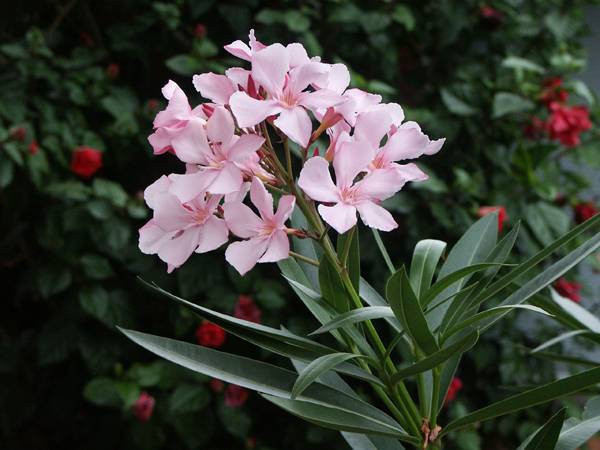
“Creative Commons Flowers of Nerium oleander in our front yard in Chelsea, Victoria, Australia.By Ian W. Fieggen, licensed under CC 3.0
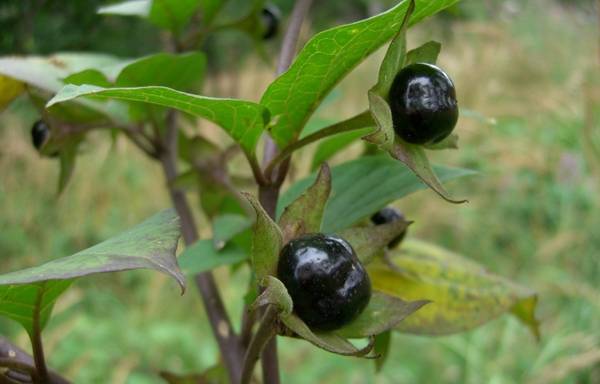
“Creative Commons Atropa belladoona Source Fotopedia by Schwarze Tollkirsche, licensed under CC 2.0
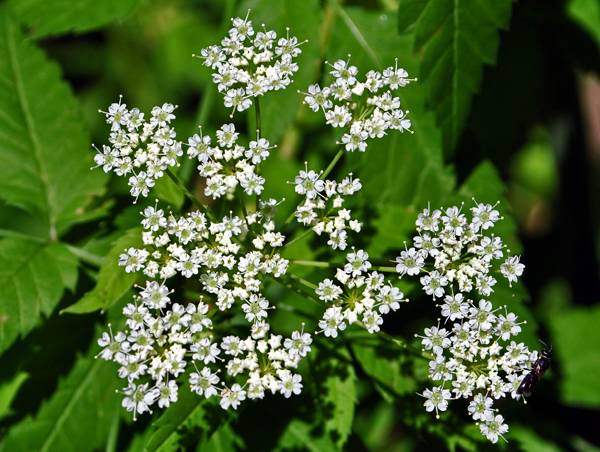
“Creative Commons Common Water-Hemlock (Cicuta maculata). By
Aaron Carlson, licensed under CC 2.0
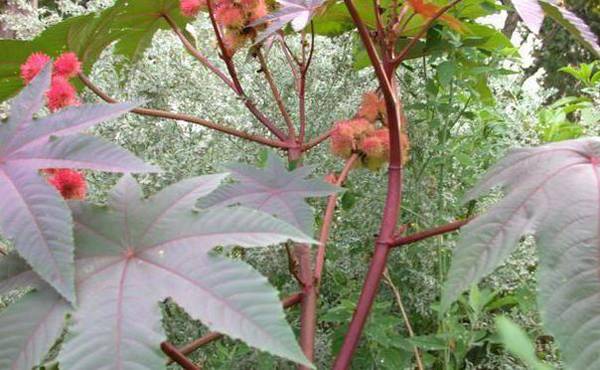
“Creative Commons Ricinus communis Castor Bean, Caster Oil Plant, Mole Bean, Higuera Infernal. By
Dave Whitinger, licensed under CC 3.0
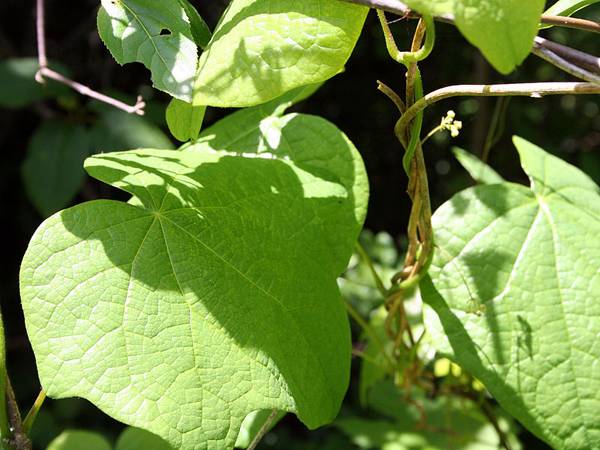
“Creative Commons Menispermum canadense (Canadian moonseed) photographed at the Skaneateles Conservation Area, Onondaga County, New York. By Randy Nonenmacher, licensed under CC 3.0
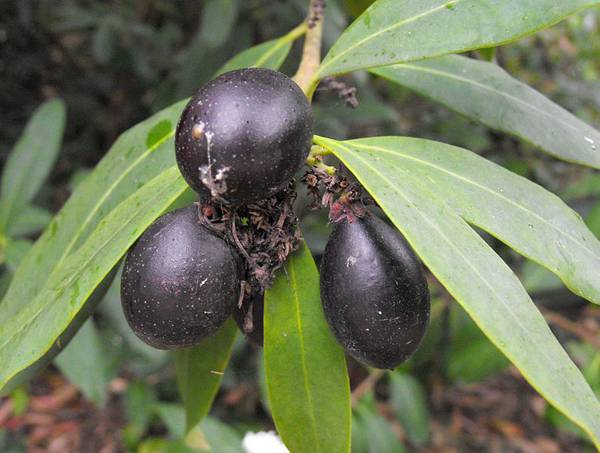
“Creative Commons Ripe fruit of a Dune Poison-bush at the Quail Botanical Gardens in Encinitas, California, USA. By Stickpen, licensed under CC
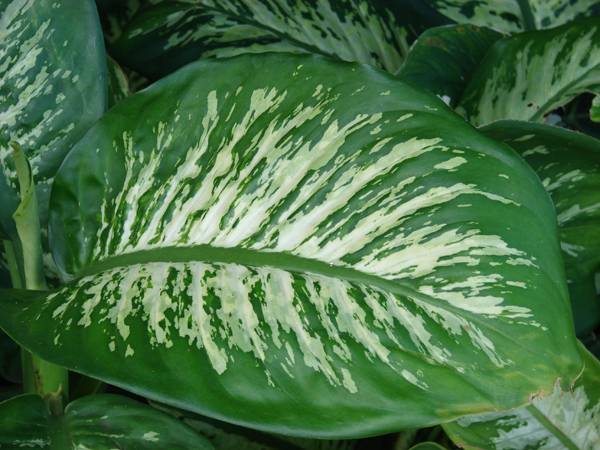
“Creative Commons ieffenbachia seguine (leaves). Location: Maui, Haiku. Source Plants of Hawaii, by Forest & Kim Starr, licensed under CC 3.0
Again, all the parts of this plant are poisonous. One should avoid eye contact with the juices which can result in intense pain and swelling. It is a very popular indoor pot plant as it is useful for purifying indoor air.
1. White Snakeroot, Ageratina altissima
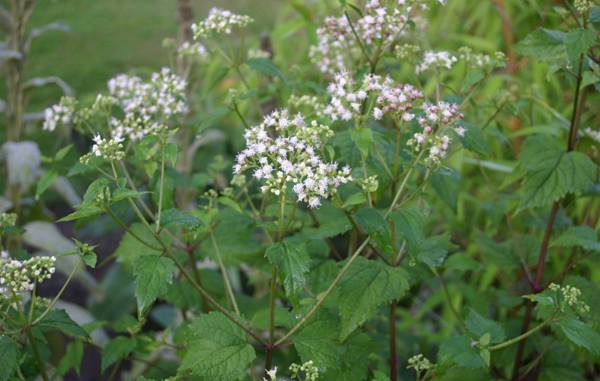
“Creative Commons Ageratina altissima (syn. Eupatorium rugosum): flower umbels. By Sten Porse, licensed under CC 2.0
Article written by Kanica Walia
This article was originally submitted to Landscape Architects Network
The Art and Science of Wind Propelled Sculptures
Sure we have all seen sculptures in art galleries that can stand the test of time. They vary in sizes, materials and like all art; they represent a certain meaning… the imagination of the artist that he or she has brought to life. What about art that can move through the test of time? Kinetic art is a three-dimensional sculpture work that has motion and expands into the world of The Art and Science of Wind Propelled Sculptures. Like the examples you will see in a short while, they have the ability to move through forces of nature such as wind, solar power, gravity or magnetism. The word motion is the key word here. Movement is a part of our daily lives; We are in motion for most parts of our day that it becomes a series of actions that go unnoticed. “Just as one can compose colors or forms, so one can compose motions.” – Alexander Calder Kinetic artists create to explore the science behind these motions and make the viewers appreciate the joy in motion. If you explore the process of these magnificent pieces, you will find that, many times, the initial step of imagining takes on the process of scientific theories, mathematical calculations and even working on computer software to finally bring it to life. Therefore it is apparent that to the kinetic artists, expressing movement becomes a critical element of the sculpture. Like a painter using colors to explore their form of expression, motion becomes a propelling tool of self-expression for kinetic artists, much like a dancer. Let’s go back through time and see how this tool of self-expression has developed over time to present day, where new technology and art in demand allow for artists to push the boundaries with a new palette of creations. 1913: Marcel Duchamp’s Bicycle Wheel: Marcel Duchamp was the pioneer of the kinetic art form. This piece of sculpture that consisted of a bicycle wheel attached to a stool started to question the possibilities of sculpture art. It was seen as a piece of kinetic art as the wheel could be spun. 1941:Alexander Calder’s Arc of Petals: This kinetic art is a hanging sculpture that uses natural organic forms. The careful balancing of materials and composition, with the larger heavier forms on top and lighter ones at the bottom, allow for gentle motions in light breezes. The work is suggestive of autumn leaves that fall to the ground at the sight indication of breeze. 1964: Bridget Riley’s Blaze: Another form of kinetic art was explored during the 1960s. This type of kinetic art uses perceptual optical illusions. Marcel Duchamp’s Bicycle may have well been the inspiration behind Bridget Riley’s Blaze. When the viewers look at this, they are given the impression of movement within the piece. At times, they themselves have to move backwards and forward in order to be able to ‘see’ the motion. 1990s-present day: Theo Jansen’s Strandbeest: These sculptures embody a life of their own and are bound to make us stop and wonder about our own movement patterns. Made of light plastic yellow tubes, these “new forms of life”, as described by Jansen, are powered only by the wind. With strong and slightly futuristic visions, Jansen almost makes the viewers, who encounter these creatures, wonder how these kinetic art forms can become a part of our society. Reuben Margolin’s Nebula: Made from 445 suspending cables and 15,000 shimmering bicycle reflectors, and coming to life through a series of mathematics equations combined with technology, this gigantic piece of kinetic art shows the motion of waves with a peaceful quality. The process behind the creation just goes to show how these kinetic art forms can be just as complicated as they can be simple. Kinetic Rain in Changi Airport, Singapore: The cooperation between artists, programmers and technologists made this a truly mesmerizing piece of art in motion. Kinetic Rain represents Singapore’s tropical climate. Each droplet changes in motion- at times moving in unity and other times by their own rhythm. Here, the notion of motion is represented very delicately that it almost seems musical. Behnaz Babazadeh’s Fermid: Fermid depicts the natural movement that can be found in living organisms. What’s unique about this piece is that it incorporates lighting and realistic and sensitive motions to challenge the viewer’s “perception of body and space” as explained by Babazadeh. The sculpture successfully imitates the natural motions; the mechanical breathing movement is almost life-like. Fermid seems to have a life of its own and may just as well be a living form lurking under the sea, inhaling and exhaling…sitting and waiting… Fermid from Behnaz Babazadeh on Vimeo. The examples above show just how one idea of an art form, first initiated by one, can be explored and expressed through different mediums by many other artists. Kinetic art over time has been given multiple dimensions. It is also a great example of what can be achieved when multiple professions join to express creativity at a bigger and innovative scale. As technology becomes more advanced, the notion of motion through art is sure to be amplified and expressed further creatively in the future days to come. Article written by Win Phyo Featured image: shutterstock.com
This article was originally submitted to Landscape Architects Network


